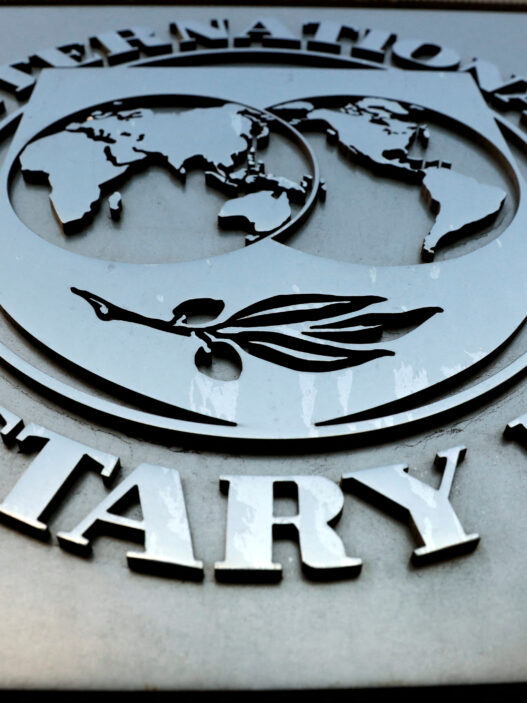The Dragon’s Dilemma: China’s GDP Growth Falls Short
Powered by MasterCFA.com
What Happened?
China’s economy grew by 4.6% year-on-year in the third quarter of 2024, aligning with expectations but falling short of the government’s 5% annual target. The quarter-on-quarter growth was 0.9%, slightly below the anticipated 1%. Despite recent stimulus measures, the world’s second-largest economy continues to grapple with challenges such as deflation, weak private spending, and a prolonged property market crisis.
Why Does This Matter?
Impact on the Economy:
China’s economic performance has far-reaching implications for the global economy. As a major driver of global growth and a crucial player in international trade, any slowdown in China can ripple across markets worldwide. The country’s struggle to meet its growth target may lead to reduced demand for commodities and impact global supply chains.
Personal and Business Effects:
For Chinese citizens, slower economic growth could mean fewer job opportunities and potentially stagnant wages. Businesses, both domestic and international, may face reduced consumer spending and investment opportunities in China. This could lead to a reassessment of expansion plans and potentially impact global stock markets.
Economic Theories in the Real World
Theoretical Concepts in Action:
a) Economic Theories:
- Aggregate Demand and Supply: China’s efforts to stimulate the economy through various measures reflect attempts to boost aggregate demand. The sluggish growth despite these efforts suggests structural issues affecting aggregate supply.
- Deflationary Spiral: The sustained deflationary trend in China illustrates the concept of a deflationary spiral, where falling prices lead to reduced spending, further decreasing economic activity.
- Keynesian Economics: The government’s stimulus measures align with Keynesian theory, which advocates for increased government spending to boost economic growth during downturns.
b) Real-World Application:
The Chinese government’s recent stimulus measures provide a real-world example of how policymakers apply economic theories to address challenges. For instance:
- Aggregate Demand Stimulation: By announcing support for the property market and plans to improve local government debt positions, China is attempting to increase confidence and spending in key sectors of the economy.
- Breaking the Deflationary Cycle: Efforts to boost industrial production and retail sales (which grew more than expected in September) are aimed at reversing the deflationary trend by encouraging spending and investment.
- Government Intervention: The concentrated efforts to shore up economic growth through various stimulus measures exemplify the Keynesian approach to economic management during slowdowns.
Historically, we can draw parallels to Japan’s economic challenges in the 1990s, where deflationary pressures and a real estate market crash led to a prolonged period of economic stagnation. Japan’s experience highlights the difficulties in breaking out of a deflationary cycle and the importance of timely and effective policy interventions.
Crystal Ball Gazing: What Could Happen Next?
- Stimulus Impact: If the recent stimulus measures prove effective, we could see a gradual increase in economic growth, potentially bringing China closer to its 5% target by year-end.
- Global Ripple Effects: Should China’s growth continue to lag, it could lead to decreased demand for global commodities, potentially impacting resource-exporting countries and global trade patterns.
- Policy Shifts: The government might introduce more aggressive stimulus measures or structural reforms to address underlying economic issues, particularly in the property sector.
- Currency Fluctuations: Continued economic challenges could put pressure on the yuan, potentially leading to currency depreciation and impacting global forex markets.
Why You Should Pay Attention:
Understanding China’s economic situation is crucial for making informed personal finance and investment decisions. Here’s why:
- Global Market Influence: China’s economic health significantly impacts global stock markets. Being aware of these dynamics can help you make more informed investment choices, whether you’re considering international stocks or domestic companies with exposure to China.
- Sector-Specific Opportunities: Knowledge of China’s economic challenges and policy responses can help identify potential investment opportunities or risks in specific sectors, such as real estate, technology, or commodities.
- Currency Considerations: Understanding the factors affecting China’s economy can provide insights into potential currency movements, which is valuable for forex trading or international investment decisions.
- Career Development: For aspiring financial analysts, a deep understanding of the world’s second-largest economy and its global impact is invaluable. It enhances your ability to provide comprehensive market analysis and make well-informed recommendations.
Questions to Ponder:
- How might China’s economic slowdown affect your country’s export-dependent industries?
- What lessons can other emerging economies learn from China’s current economic challenges?
- How could prolonged deflation in China impact global inflation trends and central bank policies worldwide?
- In what ways might China’s property market issues spill over into the global financial system?
- How could China’s economic policies shift if growth continues to fall short of targets, and what would be the global implications?
Keep Learning with MasterCFA: Staying informed about China’s economic dynamics and their global impacts is essential for any budding analyst. Dive deeper into these topics to enhance your understanding and prepare for the CFA Exam. Explore more insightful articles and resources with MasterCFA to stay ahead in your finance career.















